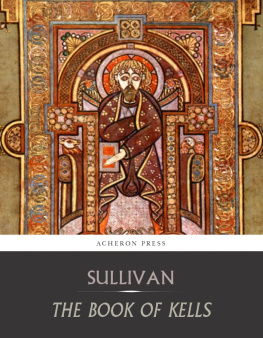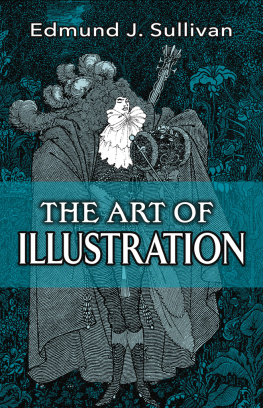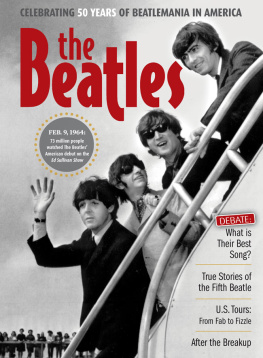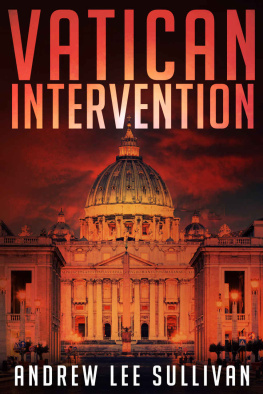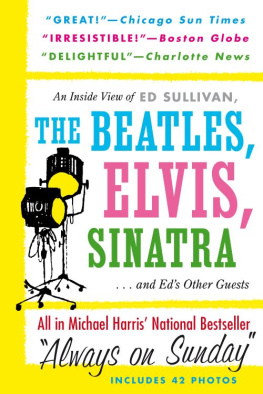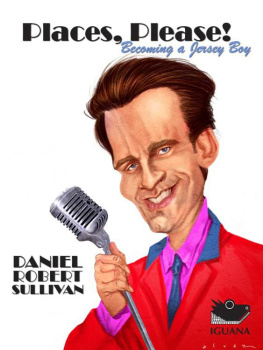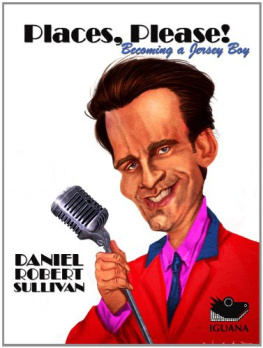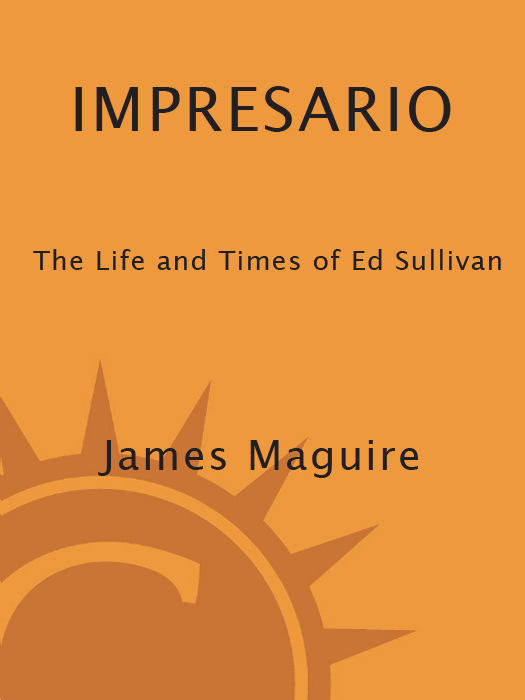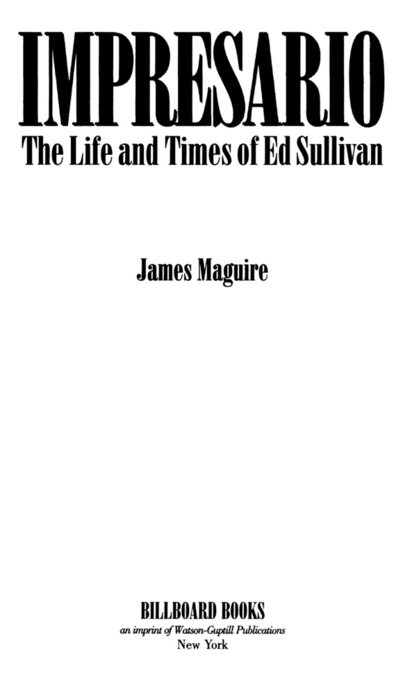Quotations from Prime Time by Marlo Lewis and Mina Bess Lewis copyright 1979 by Marlo Lewis and Mina Bess Lewis. Used by permission of Jeremy P. Tarcher, an imprint of Penguin Group (USA) Inc.
Quotations from A Thousand Sundays: The Story of the Ed Sullivan Show by Jerry Bowles copyright 1980 by Jerry Bowles. Used by permission of G.P. Putnams Sons, a division of Penguin Group (USA) Inc.
Copyright 2006 by James Maguire
First published in the United States in 2006 by Billboard Books
an imprint of Watson-Guptill Publications
a division of VNU Business Media, Inc.
770 Broadway, New York, New York 10003
www.watsonguptill.com
Executive Editor: Bob Nirkind
Editor: Meryl Greenblatt
Senior Production Manager: Ellen Greene
Library of Congress Control Number: 2005933953
All rights reserved. No part of this publication may be reproduced or used in any form or by any meansgraphic, electronic, or mechanical, including photocopying, recording, taping, or information storage-and-retrieval systemswithout the prior permission of the publisher.
eISBN: 978-0-307-79944-9
v3.1
For Corinne, of course
Contents
PART ONE
A SHOWMANS EDUCATION
CHAPTER ONE
Twins
CHAPTER TWO
Two Loves
CHAPTER THREE
The Porno Graphic
CHAPTER FOUR
Broadway
CHAPTER FIVE
Caf Society
CHAPTER SIX
Hollywood
CHAPTER SEVEN
The War Years
PART TWO
THE BIRTH OF TELEVISION
CHAPTER EIGHT
A Temporary Job
CHAPTER NINE
Really Big Show
CHAPTER TEN
David vs. Goliath
CHAPTER ELEVEN
Stardom
CHAPTER TWELVE
Elvis
CHAPTER THIRTEEN
The Globetrotter
CHAPTER FOURTEEN
The Times They Are a Changin
CHAPTER FIFTEEN
Beatlemania
CHAPTER SIXTEEN
The Generation Gap
CHAPTER SEVENTEEN
Ripped Asunder
Acknowledgments

This book would hardly have been possible without the generous assistance of many talented people.
A number of individuals at research and cultural institutions deserve special mention. In particular, Mike Mashon, a curator at the Library of Congress, not only allowed me access to the Sullivan show library before it was opened to the public, but provided invaluable research aid. Felicia Reilly at the Museum of Broadcast Communications in Chicago went above and beyond the call of duty in assisting my research. Thank you, also, to Tara Olivera at the Center for American History in San Antonio, Texas, and to Jane Klain at the Museum of Television and Radio in New York.
Jacqueline Willoughby, at the New York Public Library, understands the Byzantine politics of interlibrary loan better than anyone, and Warren Platt is one of the NYPLs most helpful librarians; Dorinda Hartmann provided critical assistance as I explored Sullivans personal papers at the Wisconsin Center for Film and Theater Research; Judith Caplans aid with genealogical research helped greatly.
I am indebted to Walter Podrazik, a leading television historian, for his expertise and his enthusiastic research help, and to Bruce Spizer, one of the foremost Beatles historians, for his helpful feedback.
Andrew Solt, who owns the Sullivan library, was unfailingly helpful and kind, as was Greg Vine of Solt Productions.
Thank you with a cherry on top to Mr. John Frain and Ms. Sydney Jones, for their wise words about my manuscripts, including this one.
Very special thanks to this books executive editor, Bob Nirkind, for his remarkable insight into the inner workings of a manuscript; and to its editor, Meryl Greenblatt, for her sense of style and attention to detail. Special thanks, too, to my agent, Agnes Birnbaum, for her supportI will always owe her lunch.
Among the many other individuals who lent guidance, a helpful hand, or general moral support, a big thanks to: Bill Gallo and Angela Troisi, at the Daily News, for their generosity and their memories, as well as Lenore Schlossberg at the Daily News for her advice; Deborah Kelman, Jerry Hamza, and Richard Grant for help with interviews; David Margolick, for lending an ear and for interview assistance; Scott Omelianuk, for his writing advice; Florence Eichin at the Penguin Group for her unfailing good cheer; Eric Fettmann at the New York Post for his encyclopedic knowledge of the New York newspaper business; Christopher Saunders, Devin Comiskey, and, most especially, Dan Muse, for being my patron saints; and Mr. Vincent Favale at CBS, for being a dude, and for believing in this project.
And the biggest thanks of all goes to Corinne, for keeping my heart running, a particularly important thing when one faces a blank page.
Ah, who can tell how hard it is to climb the steep where Fames proud temple shines afar?
J AMES B EATTIE (17351803)
Prologue

O N AN OVERCAST S UNDAY MORNING he sat in his robe and hurriedly typed his column. Next to the typewriter sat his usual breakfasta lamb chop ordered from room service, an artificially sweetened pear, and iced teaand he ate while he worked. Sundays were the longest days. He cranked out his New York Daily News column late morning, his driver picked him up early afternoon, then it was dress rehearsalin which he pummeled the show into shapefollowed by a lengthy production meeting, numerous last minute details, and finally, at eight oclock the cameras blinked on and he walked into fifteen million living rooms. So this morning, his poodle Bojangles (named after storied tap dancer Bill Bojangles Robinson) went neglected. And he could not so much as glance at his clutter of office mementoes: the caricature of him drawn by Walt Disney, a framed copy of Time magazine with his face on the cover, and, by the typewriter, a photo of his wife, Sylvia, inscribed To Ed with lovetill the winds stop blowing.
Sylvia. When he and Sylvia Weinstein began dating in 1926, she told her parents she was seeing a boy named Ed Solomon, who worked as a sports reporter for the New York Evening Graphic. Oh, her brother said, you mean Ed Sullivan. The possibility of a Jewish-Catholic marriage made both families apprehensiveEds much more soand the romance was on-again, off-again for three years. Now, however, Sylvia and Ed formed a unit. Yes, there had been rumors of Ed and other women, but they never derailed the marriage. The couple went out to eat five nights a week, rotating through their favorite Manhattan nightspotstrendy places like Dannys Hideaway or Jimmy Kellys. Like the show he produced, the marriage was a union of supposedly dissimilar elements that was larger than the sum of its parts. Ed called Sylvia every Sunday night immediately after the showshe watched at homewanting to know how it had gone, but she understood he wanted only reassurance. Sylvia was a cheerleader, a supporter, tolerant of his moods, a safe harbor in a world filled with critics.




